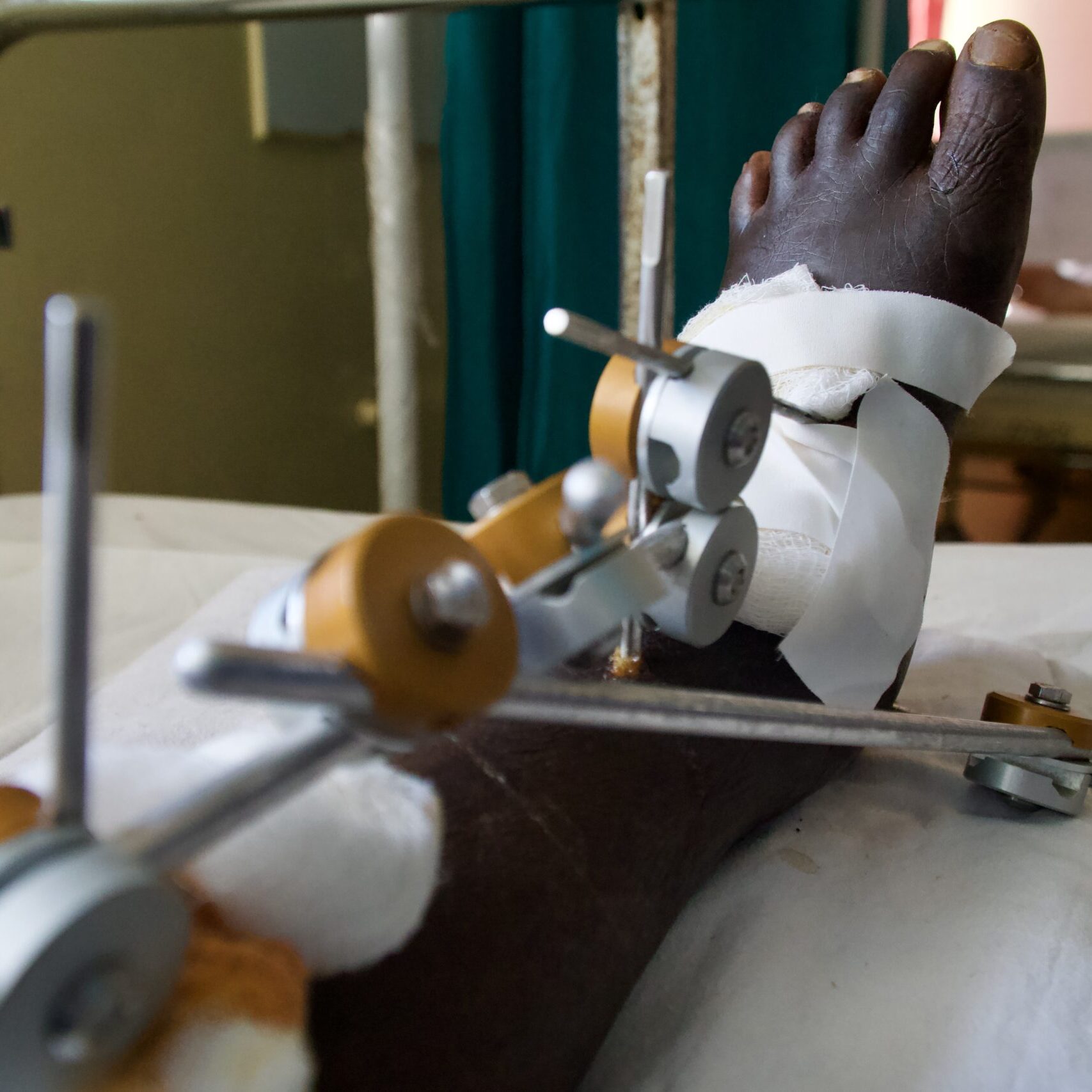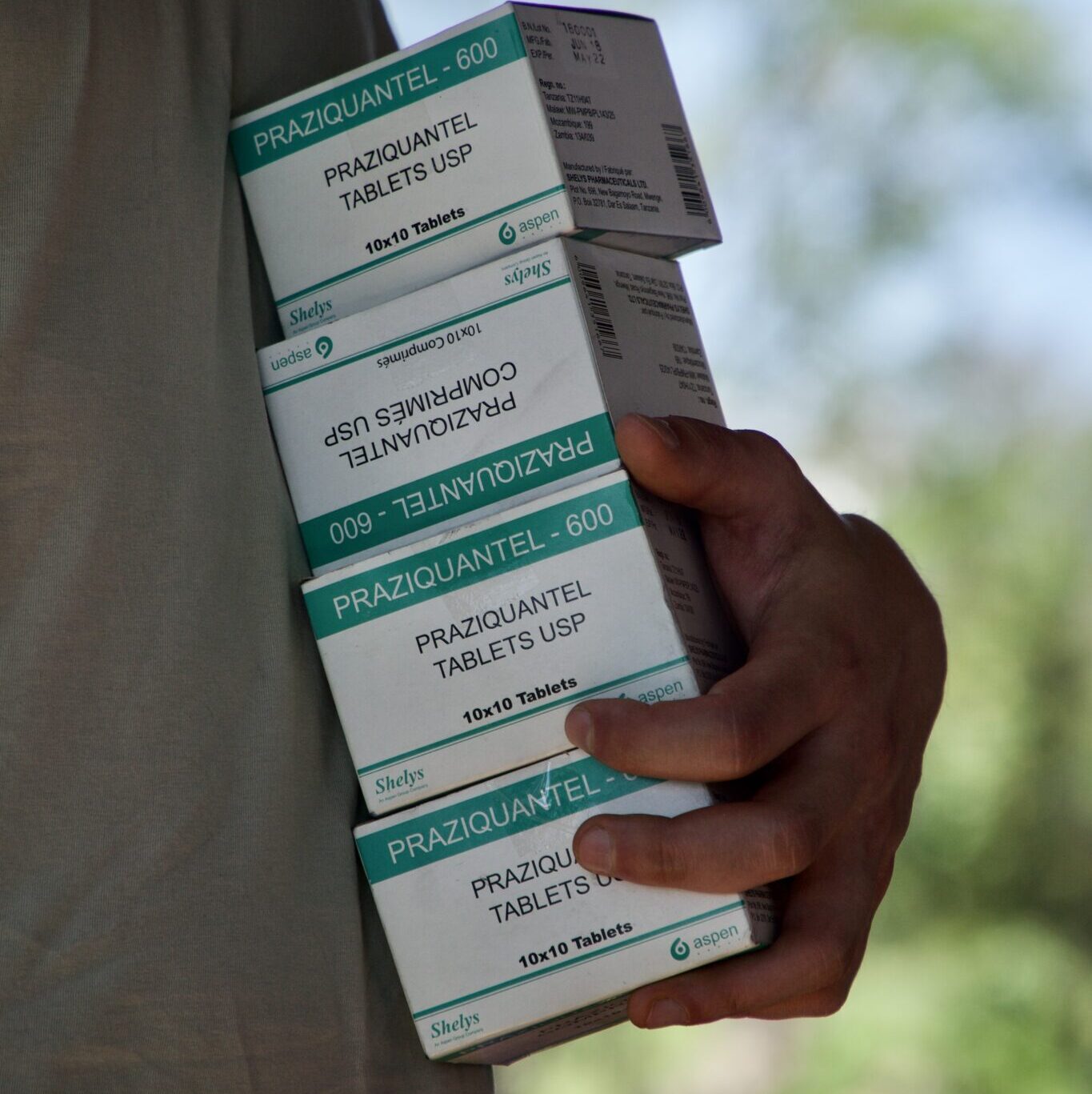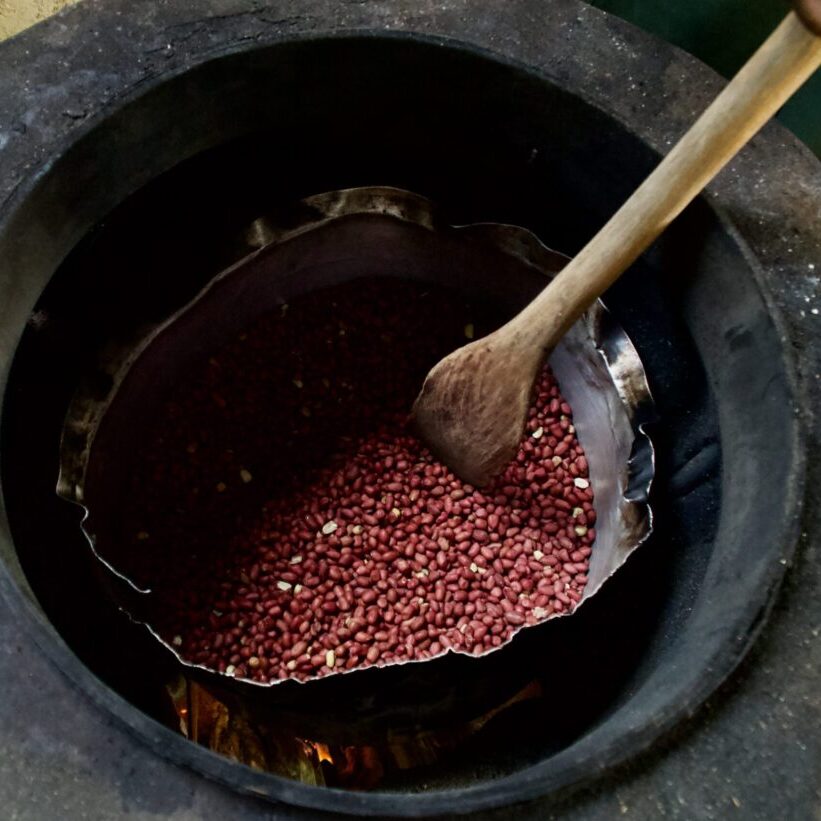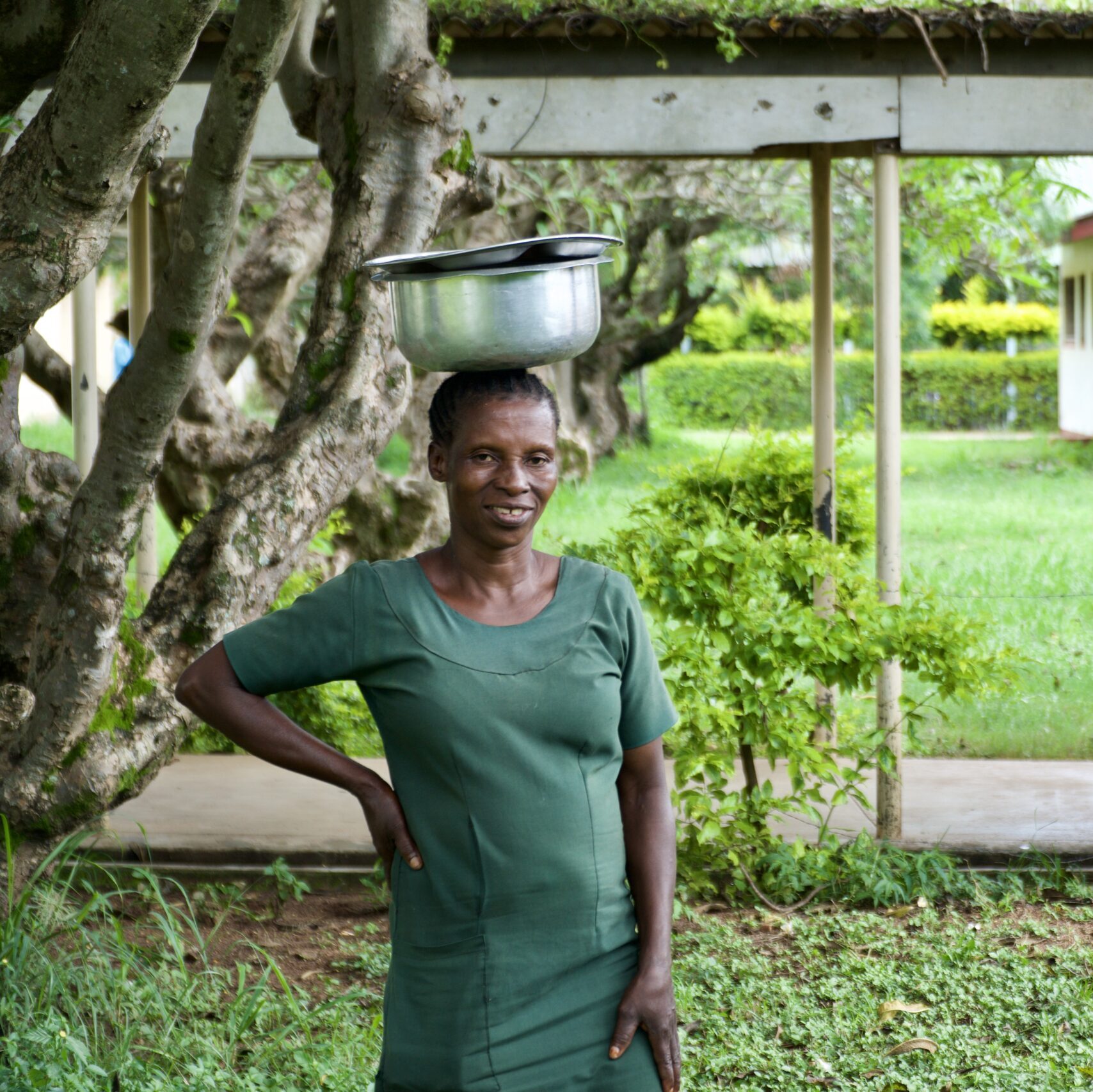Wetenschappelijke analyse van al onze projecten.
Medicijnen en medische apparatuur voor iedereen.
Focus op verbeterde opleiding en onderwijs.
Our bonesetting team is going strong!
After four months of fieldwork, Jovine, Nkaina, and Luuk have gathered some fascinating insights into what shapes patients’ choices when it comes to treatment.
We’ve seen that patients referred straight to the hospital are more likely to have surgery when needed, compared to those referred by our partner bonesetters. People with higher education levels also tend to follow their treatment plans more closely.
In the next few months, we’ll keep collecting data to learn more about how people make healthcare decisions. And how those choices affect recovery, daily life, and income.
More stories and findings soon. 💚
#ShiratiHealth #BonesettingProject #CommunityCare #HealthResearch #EastAfricaCare
...
At Shirati Foundation, we believe healthcare should be within reach for everyone.
We work with local healers, doctors, and nurses to connect traditional and modern care and make that possible. Our projects grow from local ideas and local leadership. They’re run by East African coordinators, built on real community needs, and designed to strengthen the health system so that it lasts.
From screening programs to nurse training, and from fighting malnutrition to using digital tools, everything we do helps people stay healthy. Today and in the future.
Follow us to see how we try to shape better healthcare, one step at a time. 💚
#ShiratiHealth #TogetherForCare #HealthForAll #CommunityDriven #EastAfricaCare
...
Two weeks ago, we’ve had an unforgettable benefit lunch at Restaurant De Scheepskameel in Amsterdam. We are beyond proud to share the impact we made together while enjoying a delicious three-course menu: €7,697.17 was raised for our projects in Shirati!
Of course, every euro goes directly towards improving healthcare in our second home in Tanzania. To give you an idea of what this amount can achieve: with just 1 euro, we can provide medication to protect someone from schistosomiasis, and for 3 euros, we can screen a person as part of our Healthy Hearts project, where we focus on combating the effects of high blood pressure and diabetes.
We could not have done this without you and for that, we could not thank you all enough. We want to give a special thanks to:
✨ @hanos_nl , @massimogelatoamsterdam , @gebroeders_niemeijer , @roselamsterdam , @zero.zero.store , @alexanderhoeve_rijnstraat for the support behind the scenes
✨ @wijnkameel for the wines
✨ @hotelpaal8 , @concertgebouw , @amsterdammuseum , @vodatent , @mosj_atelier for donating the raffle prizes
✨ @scheepskameel for accommodating their beautiful location
Asante Sana (thank you)!
#lunchtogether #asantesana #stichtingshirati
...
Shirati ‘Kanisa la Mennonite Tanzania’ Hospital werd in 1934 opgericht door Amerikaanse Mennonieten (Doopsgezinden). Gelegen aan het Victoriameer, voorziet dit missieziekenhuis de inmiddels +/- 400.000 inwoners van het Rorya district van medische gezondheidszorg.
Sinds 2010 staat het ziekenhuis onder leiding van Bwire Chirangi, een Tanzaniaans arts, na afronding van zijn Master Global Health aan de Universiteit van Maastricht. Tijdens zijn bestuur zijn vele verbeteringen succesvol geïmplementeerd, zoals:
Als artsen internationale gezondheidszorg & tropengeneeskunde zijn wij, Esther, Nathan & Joost, al geruime tijd werkzaam of werkzaam geweest in Shirati. Door het dagelijks leveren van zorg aan de patiënten van het Shirati KMT Hospital, merkten we op dat sommige aandoeningen, als ondervoeding en verkeersongelukken, bovengemiddeld veel voorkwamen.
Zo begonnen we, gesteund door vrienden en familie, ons ook in te zetten voor systematische zorgverbetering: een pindaproductie unit werd gebouwd, apparatuur voor huidtransplantaties geleverd en lokale artsen getraind in het gebruik ervan. Ook werd een outreach programma opgezet om medicatie tegen schistosomiasis uit te reiken aan risicogroepen in de regio.
Om deze zorg structureel te kunnen leveren, is professionalisering nodig. Dus besloten we in april 2022 Stichting Shirati in het leven te roepen, om Shirati een gezicht in Nederland te geven, en donoren tegemoet te kunnen komen met het belastingvoordeel van een ANBI-stichting.

Samen met traditionele bonesetters een behandelplan maken voor patiënten met botbreuken

Het opsporen van patiënten met hart- en vaatziekten voordat ze ernstig ziek worden

Gratis behandeling van, en patiënteneducatie over schistosomiasis

Lokale productie van speciale pindakaas tegen ondervoeding

Dagelijks één gratis gezonde maaltijd voor alle patiënten

Onderzoeker Bonesetter Project

Onderzoeker Bonesetter Project en Projectmanager Schistosomiasis Outreach Shirati

Diëtiste en projectleider Shirati Peanut Project en Shirati Food Program

Betrokken bij Shirati Peanut Project en Shirati Food Program

Diëtiste Shirati Peanut Project en Shirati Food Program

Diëtist Shirati Peanut Project en Shirati Food Program

Productieassistent Shirati Peanut Project

Productieassistent Shirati Peanut Project





Projectmanager Healthy Hearts Project

Project coördinator Bone Setter Project

Voorzitter
Initiatiefnemer Shirati Peanut Project en Shirati Food Program

Secretaris
Initiatiefnemer Bonesetter Project

Algemeen bestuurslid & vertrouwenspersoon

Algemeen bestuurslid
Initiatiefnemer Shirati Peanut Project en Shirati Food Program

Penningmeester
Initiatiefnemer Schistosomiasis Outreach Shirati en Healthy Hearts Project

Algemeen bestuurslid
Digitaal specialist

Algemeen bestuurslid
Projectleider Healthy Hearts Project en fundraising

Algemeen bestuurslid
Marketing & communicatie
Voor slechts €10 per maand help je ons om onze doelen te bereiken. Alle donaties gaan volledig naar de projecten zelf.
Bedankt!
Voor andere bedragen kun je een periodieke overschrijving instellen naar NL07 TRIO 0320 4851 96 tnv Stichting Shirati.
Stichting Shirati is een ANBI geregistreerde stichting. Hierdoor is een periodieke schenking voor 5 jaar of langer volledig belastingaftrekbaar. Wanneer je onze periodieke schenkingovereenkomst invult en deze mailt naar info@stichtingshirati.nl kunnen we vervolgens samen deze ANBI belastingvoordelen regelen.
Ook met eenmalige donaties zijn we natuurlijk erg blij! Klik op onderstaande knop en bepaal het bedrag zelf.
Bedankt!
Mocht je met je (eenmalige of periodieke) donatie een specifiek project willen steunen, stuur ons dan even een mailtje nadat je hebt gedoneerd: info@stichtingshirati.nl
Binnerts, J.J., Hendriks, T.C.C., Hussein, S., Bempong-Ahun, N., Ibbotson, G.C., Harrison, W.J., Martin, C., Ranganathan, K., Ehsan, A.N., Chirangi, B.M., Edwards, M.J.R. and Hermans, E. (2025), Intersectoral Collaboration Between Traditional Bonesetters and Formal Healthcare: A Systematic Review on Past Initiatives and Stakeholder Perspectives. World J Surg, 49: 652-663. https://doi.org/10.1002/wjs.12503
Background
Bone fractures in low- and middle-income countries are commonly managed by traditional bonesetters (TBSs). Past studies emphasize the potential for improved fracture care through intersectoral cooperation. This review gauged support among stakeholders for intersectoral collaboration and the results of previous initiatives.
Methods
Five medical databases were reviewed. Studies focusing on stakeholder perspectives and articles detailing collaborative initiatives were included. Data extraction and synthesis were carried out using the Cochrane Consumers and Communication Review Group’s template. Additionally, all studies underwent quality assessment.
Results
Of the 3821 identified articles, 16 were included after full-text screening. Twelve articles presented stakeholder perspectives, whereas four discussed collaborative initiatives. The overall article quality was low: articles on stakeholder perspectives scored on average 1.42 out of 4 points, whereas articles on collaborative initiatives scored a mean 1.25 points. In total, 62% of stakeholders (75% of TBSs, 92% of hospital staff, and 52% of patients) expressed support for intersectoral collaboration. The ratio between stakeholders expressing support versus those opposing was 4.4:1. No articles presented data on governmental perspectives. The most mentioned collaborative forms were TBS training (24% of stakeholders) and an integrative model (16% of stakeholders). Interventional studies all consisted of TBS training, reporting improved clinical outcomes and increased practice integration.
Conclusion
Despite the limited and low-quality evidence on collaboration initiatives and perspectives, most stakeholders seem supportive of intersectoral collaboration, with training and integration being commonly suggested. Future research efforts exploring the feasibility of embedding TBSs into current primary care systems should ensure the involvement of local and national government.
Binnerts, J.J., Hendriks, T.C.C., Okoth, J., Gill-Wiehl, A., Ranganathan, K., Ehsan, A.N., Harun, N.W., Ogoya, S., Bempong-Ahun, N., Ibbotson, G., Harrison, W.J., Martin, C., Jr., Edwards, M.J.R., Hermans, E. and Chirangi, B.M. (2025), Incidence, Impact, and Healthcare-Seeking Behavior for Extremity Fractures in Resource-Limited Settings: A Household Survey in Rural Tanzania. World J Surg, 49: 1368-1376. https://doi.org/10.1002/wjs.12540
Background
Limited research exists on the burden of extremity fractures in Sub-Saharan Africa. Underreporting is likely, as patients often seek out traditional bonesetters (TBSs). This study aims to determine the annual incidence and impact of extremity fractures, alongside health-seeking behavior of patients in rural Tanzania.
Methods
We conducted a cross-sectional household survey in Rorya district, Tanzania, enrolling 497 households with 2667 members, using spatial random sampling. We surveyed household heads regarding access to fracture care and fracture occurrence among household members. We then randomly selected up to three members per household to survey, using the 1448 responses to calculate extremity fracture incidence. Any (self-)reported fractures were questioned on healthcare-seeking behavior and assessed through radiological evaluation. Confirmed cases completed a survey on disability and financial impact.
Results
We radiologically confirmed 11 extremity fractures among 1448 randomly selected respondents, yielding an annual incidence of 0.76%. Five additional fractures were identified among nonrandomized individuals totaling 16 confirmed cases. TBS attendance among patients suspecting fracture was significantly higher than hospital attendance (95% vs. 32%, p < 0.0005). Primary reasons for choosing TBSs were lower cost (62%) and perceived faster healing (29%). Sixty-two percent of patients reported reduced work capacity or requiring help with transport and 50% experienced a decrease in income.
Conclusions
The annual incidence of extremity fractures in this study was 0.76%. TBSs were largely preferred over hospitals due to lower cost and perceived faster healing. Over half of patients experienced reduced ability to work and income loss. Improved communication between TBSs and hospitals, along with better access to hospital care, could reduce complications.
Binnerts J.J., Hendriks T.C.C., Buzugbe N., et al. (2025) Broad Support Among Stakeholders for Collaboration Between Traditional Bonesetters and Formal Healthcare: A Qualitative Study in a Resource-Limited Setting. INQUIRY. 2025;62. doi:10.1177/00469580251325031
Extremity fractures are increasingly common in Sub-Saharan Africa. In many resource-limited settings, patients with fractures have historically sought out traditional bonesetters (TBSs) and continue to do so, in part due to the undercapacity of existing orthopedic facilities. This qualitative study investigates key stakeholder perspectives on intersectoral collaboration between the formal healthcare system and TBSs in treating extremity fractures in the Rorya district, Tanzania. We combined focus group discussions and semi-structured interviews with four key stakeholder groups: patients with previous fractures, TBSs, hospital staff, and local government representatives. Questions concerned stakeholder experience, advantages of TBS and hospital care, perspectives on collaboration, and potential facilitators and/or barriers. Transcripts were analyzed using thematic analysis and inductive coding. Between June 2022 and August 2023, 35 TBSs, 9 patients with previous fractures, 5 hospital staff members, and 2 government representatives were interviewed. Participants unanimously recognized the need for collaboration between TBSs and hospitals.
Identified barriers included TBSs’ motivation for hospital referral, poor customer care at hospitals, and limited understanding of fracture management in hospitals by TBSs and patients. Implementation of a collaborative triage and referral system was most commonly suggested. This study summarized all relevant perspectives on intersectoral collaboration. A combined approach of a joint triage and referral system, augmented by community education and TBS training, may enhance the quality and accessibility of fracture care and potentially serve as a model for regions facing similar challenges. Further research is needed to evaluate the feasibility and effectiveness of such initiatives in practice.
Objective
The aim of this study is to explore nutrition-related health needs, the perceptions and beliefs regarding the double burden of malnutrition, as well as barriers and facilitators in accessing nutritious food among the local population in rural Tanzania.
Design
A qualitative study design using semi-structured individual interviews and focus-group discussions (FGD) was used. Basic socio-demographic information was obtained from all participants.
Setting
The study was conducted in four villages within the catchment area of the Shirati KMT Hospital in Rorya district, in north-western Tanzania.
Participants
Men and women in the reproductive age as well as Community Health Workers (CHW) were included.
Results
In total, we performed fourteen interviews (N 41), consisting of four FGD, one dual and nine individual interviews. The three most significant topics that were identified are the large knowledge gap concerning overweight and obesity as a health problem, changing weather patterns and its implications on food supply and the socio-cultural drivers including gender roles and household dynamics.
Conclusion
Environmental and socio-cultural factors play a crucial role in the determinants for DBM, which underlines the importance of understanding the local context and the nutrition practices and beliefs of the communities. Future nutritional interventions should aim towards more inclusion of men in project implementation as well as support of women empowerment. CHW could play a key role in facilitating some of the suggested interventions, including nutritional counselling and increasing awareness on the drivers of the double burden of malnutrition.
Stichting Shirati
Nassaukade 116 3
1052EB Amsterdam
KvK: 85868744
RSIN: 863775639
info@stichtingshirati.nl
